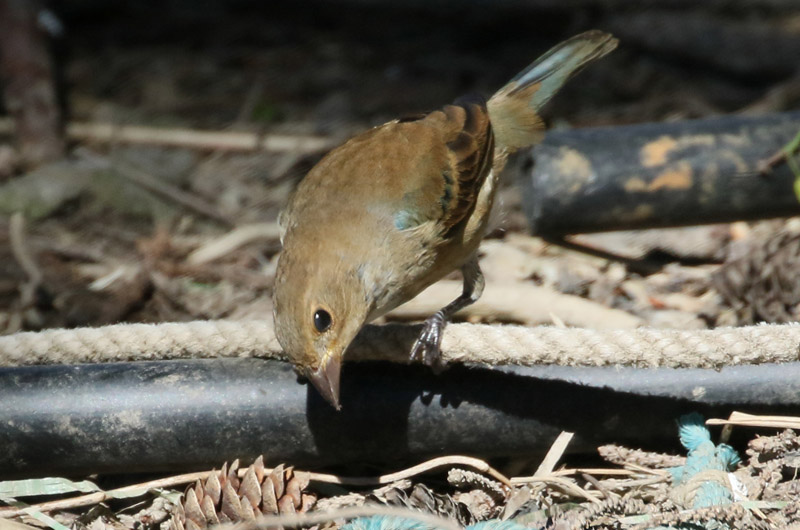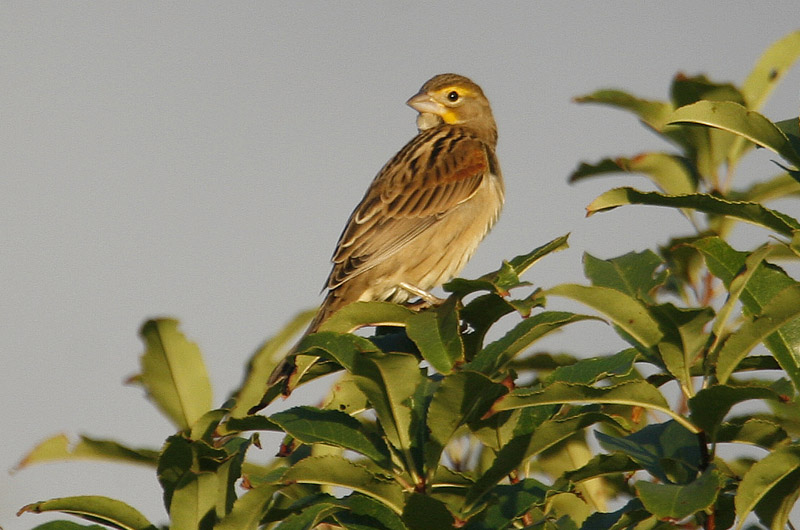Have you ever wondered why the names of some species change? For example, the old Baltimore orioles (not the baseball team) were called northern orioles for a while, and now they are back to Baltimore orioles. It was thought that they hybridized with the western Bullock’s oriole, but because that is now known to be so rare we have gotten the original name for the oriole back.
Such changes are based from the definition of a species, which must not interbreed with another species to produce fertile offspring.
Now that we have a clearer picture of the genomes of many species of birds, there are a few name changes that we can expect in the next few years because each full species gets a unique name. Eastern and western willets are now considered to be subspecies, but current scientific evidence suggests that they are each a full species so their names may change to reflect this knowledge. We may also get our myrtle warbler back; about 50 years ago it was combined with the western Audubon’s warbler into what we now know as the yellow-rumped warbler. But genetic evidence suggests that the former species are indeed full species, and that yellow-rumps may even be split into four different species.
On the other hand, the genetics of two currently full species — blue-winged warbler and golden-winged warbler — are so similar that they are likely to be lumped into one species. And the hybrids of this species (Brewster’s and Lawrence’s warblers) are apparently due to classic Mendelian dominant and recessive genes at two different areas of their genome. In other words, there are only very slight differences so they will likely be lumped into one larger species with some genetic variations.
Bird Sightings
A lot of birds are migrating past the Vineyard now. Some of them may be our summer resident species leaving, but most are birds that probably nested somewhere north and west of us, and are now migrating down the Atlantic Coast.
Bob Shriber visited the Gay Head Cliffs and he found both an indigo bunting and a dickcissel on Oct. 3.
Ken Magnuson was out birding on the cool and damp morning of Oct. 2, and his highlights were two Swainson’s thrushes at the Gay Head moraine. The Farm Institute produced three pectoral sandpipers as well as the more usual least sandpiper and both black-bellied and semipalmated plovers.
A female rose-breasted grosbeak visited Sheilah Hughes’ bird feeder on Oct. 1. The extremely heavy bill distinguishes this species from other finch-like species.
Happy Spongberg reports that on the night of Sept. 28, she observed a whippoorwill as it flew down Bijah’s Way in front of her. She comments: “The very distinctive tail was a great ID marker!”
Susan Straight emailed to say that she observed hundreds of tree swallows above the Menemsha Basin around noon on Oct. 1. These flocks, which are fascinating to watch, can be found anywhere on the Island.
The ruby-throated hummingbirds have mostly migrated south by now. Charlie Kernick still had one at his feeders as of Sept. 29, but Soo Whiting reports that her hummingbirds have gone as of Sept. 29, and Polly Bassett saw her last on Sept. 24. But it is okay to keep sugar water in those feeders as straggler ruby-throats can still pass through and this is the season for western hummers to wander east and show up here. Some of these strays are exceedingly difficult to identify, so it is best to get pictures of any that you see. Please send the photos to me at the email address below so we can confirm their identification.
October is also a month when our winter residents start to arrive. Allan Keith found three “new for the fall” species when he drove down Norton Point on Oct. 2: red-necked grebe, northern gannet, and dunlin. He also found common loon, laughing gull, lesser black-backed gull, black-bellied plover, semipalmated plover, American oystercatcher, and sanderling. At his house that afternoon he found the brant (the small goose usually in Ocean Park in the winter) that has been traveling around with a flock of Canada geese since July, as well as palm warbler, chipping sparrows, and a phoebe.
Finally, for year-round bird species, the bobwhite is always a favorite species for birders to see, and the flock of at least five quail is still hanging out in Blacksmith Valley near Squibnocket Pond. Bob Shriber is the latest person to find them, on Oct. 2.
Southbound migrants are passing through, so go look for them and please be sure to report your sightings to birds@mvgazette.com.
Robert Culbert leads Saturday morning guided birding tours and is an ecological consultant living in Vineyard Haven.







Comments
Comment policy »